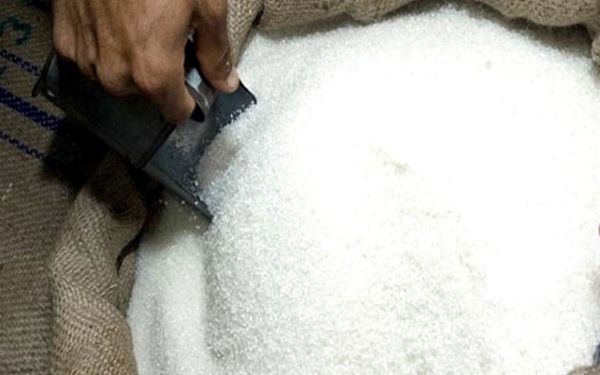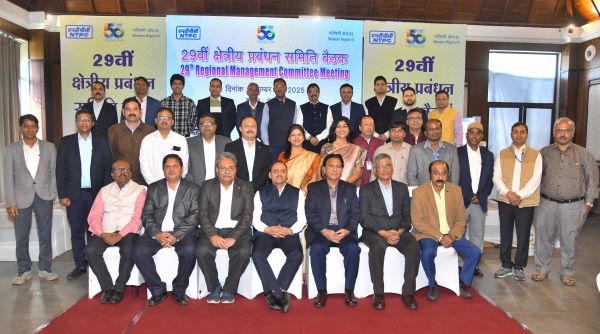
Team News Riveting
New Delhi, November 6
As another measure to balance the price stability of sugar in the country and the financial positions of sugar mills in the country, based on initial estimates of sugarcane production, Government of India has allowed export of sugar upto 60 LMT during the sugar season 2022-23.
DGFT has already notified to extend the inclusion of sugar exports under ‘Restricted’ category up to 31st October, 2023.
The Central Government has prioritized availability of about 275 Lakh Metric Tonnes (LMT) sugar for domestic consumption, about 50 LMT sugar for diversion to ethanol production and to have closing balance of about 60 LMT as on 30.09.2023. Balance quantity of sugar produced by sugar mills in the country would be allowed for exports. Since at the beginning of sugar season 2022-23, initial estimates of sugarcane production are available, it has been decided to allow export of 60 LMT sugar.
The sugarcane production in the country will be reviewed periodically and based on the latest available estimates, quantity of sugar exports to be allowed could be reconsidered.
During SS 2021-22, India exported 110 LMT sugar and became second largest exporter of sugar in the world and earned about Rs 40,000 crore worth of foreign exchange for the country. Timely payment and low carrying cost of stocks for sugar mills also resulted in early clearance of cane arrears of farmers. As on 31.10.2022, more than 96% of cane dues of farmers for SS 2021-22 were already cleared despite record procurement of sugarcane of more than 1.18 lakh crore rupees.
In the sugar export policy for SS 2022-23, Government has announced sugar mill wise export quota for all sugar mills in the country with an objective system based on average production of sugar mills in last three years and average sugar production of the country in last 3 years. Further, to expedite the sugar exports and to ensure flexibility to sugar mills in execution of the export quota, mills may decide to surrender the quota partially or fully within 60 days of the date of issue of order OR they can swap the export quota with domestic quota within 60 days.
This system would ensure lesser burden on logistics system of the country as swapping system would reduce the need to transport the sugar from distant locations to the ports for exports and movement of sugar across the length and breadth of the country for domestic consumption. Further, swapping would also ensure liquidation of sugar stocks of all mills as mills which are not able to export could swap their export quota with domestic quota of sugar mills which are able to export more, mainly due to their vicinity to ports.
At the end of Sugar Season 2022-23, it is expected that most of sugar mills will be able to sell their production either in domestic market or in international market through exports and will clear the cane dues of farmers in time. Thus, the policy has created a WIN WIN situation for sugar mills in the country.
The sugar export policy is an indication of focus of Government on ensuring price stability in sugar sector in interest of domestic consumers. By restricting the sugar exports, domestic prices will remain under control and no major inflationary trends will arise in domestic market. Indian sugar market has already seen very nominal price increase which is in tune with increase in FRP of sugarcane for farmers.
Another focus area is production of ethanol in the country which is a priority area for the country to reduce dependence on fuel imports and to move towards green energy. Higher ethanol prices for producers have already encouraged distilleries to divert more sugar towards ethanol. The sugar export policy is another mechanism to ensure availability of sufficient sugarcane/sugar/molasses for ethanol production. Diversion of sugar towards ethanol production during ESY 2022-23 is expected to be 45-50 LMT.
By allowing sugar exports, Government has also protected the interest of cane farmers and sugar mills as mills will be able to take benefits of favourable international sugar price scenario and achieve better prices of sugar so that cane dues of farmers in current sugar season 2022-23 may also be paid timely and working capital costs of mills may reduce due to optimum level of sugar stocks with them.
In last 6 years, Government has taken multiple and timely initiatives in sugar sector enabling sugar mills to stand on their own and become a self-sufficient sector. During SS 2022-23, sugar mills were not given any subsidy for sugar production/marketing and even in current season, sugar sector of the country is expected to perform well with no financial support from Government of India. Facilitating diversion of sugar to ethanol production and export of surplus sugar as per availability, Government of India has taken care of interest of about 5 crore sugarcane farmer families as well as 5 lakh sugar mills workers along with a whole ecosystem of sugar sector including ethanol distilleries taking them on growth trajectory.



